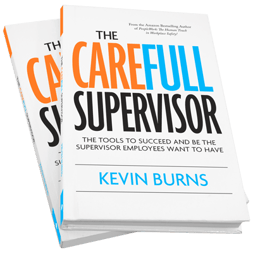Here are 7 changes you must make immediately to begin to shift away from a negative-based approach to safety.

The headline to this post is negative. Stop, never or don’t are not positive. Telling people what not to do isn’t a plan for positive action because it’s not a complete set of instructions. It’s like scolding. It’s easy to point out what not to do. A successful trip to the grocery store doesn’t include a list of what not to buy. Focusing on what-not-to-do is not a blueprint to safety success.
Using Fear For Safety?
Fear-based appeals to employees like gruesome injury photos and injured-worker don’t-do-what-I-did messages are negative. They shock and create fear. No one wants to be afraid to go to work. Pointing out that there are dangers on a job-site is necessary but rarely is it followed up with a concrete strategy of what to do next.
“Gotcha" management is negative too: waiting for employees to mess up. They tear a strip off and point of their mistakes. “Gotcha” management focuses on compliance. They enforce the rules and get employees to toe the line in safety through fear and intimidation. But negative management stifles creativity, teamwork and accountability.
Influence The Decisions Made
People make poor decisions when motivated by fear. But safety is not the absence of injury. Safety is security: physical, emotional, mental and financial. People who feel secure and confident simply make better decisions. People will act safe when they feel safe.
You have a choice between negative and positive approaches to supervisory responsibilities. You may already flip-flop back and forth between positive and negative approaches. If you don't consciously make the choice to be positive, you end up, by default, as negative. You will focus on getting compliance more than empowering better performance. Focus on positive actions in your safety program.
Arrogance also negatively contributes to the prevention of a successful safety culture. Safety managers, who claim that they have nothing more to learn in safety, need to ask themselves how long they have been at Zero? If you’re not at Zero, you still have something to learn.
Safety Must Be Selfless
Enthusiasm inspires enthusiasm. Negativity breeds negativity. People buy into your safety program because of who you are and how you behave; not how well you are certified.
Safety has to be selfless. You have to care about your people - not wait for them to mess up. You have to like your people - not mistrust them. If you can't trust them, then you can't respect them. And they can't respect you. And it will be difficult to keep safe the same people you don't trust to make good decisions.
Successful safety programs build on a foundation of respect and courtesy. How you philosophically approach safety contributes greatly to the resulting safety culture.
Here are 7 changes you must make immediately to begin to shift away from a negative-based approach to safety:
- Focus on getting individual employee buy-in to safety - versus - doing just enough to meet the bare minimum code
- Give employees skills to make better decisions - versus - enforcing the rules to get them to comply.
- Care for your people’s safety - versus - forcing your people to follow rules against their will
- View employees as good people who do good work - versus - people who can’t be trusted when they are not being watched
- Become a safety-minded organization that does excellent work - versus - a company that does mediocre work while adding safety rules.
- Change your personal philosophy to focus on “the difference you make” - versus - the authority of the position that you hold.
- Create highly-engaging and highly-participating safety meetings - versus - folded-armed, tumbleweed-rolling, cricket-chirping safety meetings.
Your personality has a great deal of influence in how well you can sell the safety program. Your personality can influence whether employees buy-in. That's important information.
So, where do you start to remove the barriers to a positive safety culture?
Start here with these 3 action steps:
- Remove injury photos and other negative motivators from everywhere in your workplace - including your PowerPoint slides.
- Remove the words don't, never and stop from all safety communications, as well as your own language.
- Remove the regret factor where you make people feel they should have done more or been more diligent.

There are many others but start with these three. Spend the next week scouring your workplace for evidence of negative messages. Be diligent. Look everywhere. Be a safety leader.
Culture builds from leadership. Status-quo builds from management. You will not build a better culture by sticking with traditional formulas and mediocrity. To get to a new place takes a thousand new steps. It takes safety leaders with courage to make changes. Build on positives.
Kevin Burns is a management consultant, safety speaker and author of "The Perfect Safety Meeting." He delivers engaging and entertaining keynote safety presentations for everyone: from front-line staff to senior management. He helps people see the light when it comes to buying-in to the safety program.


